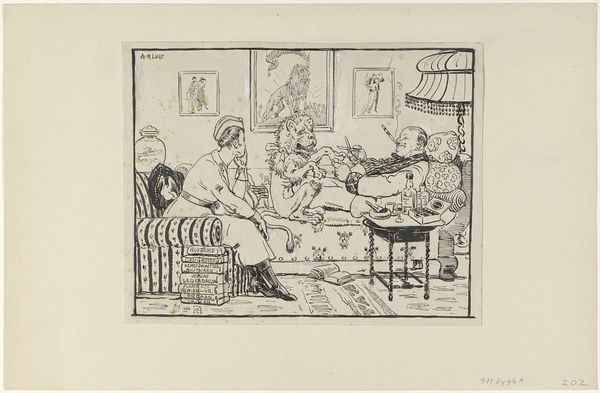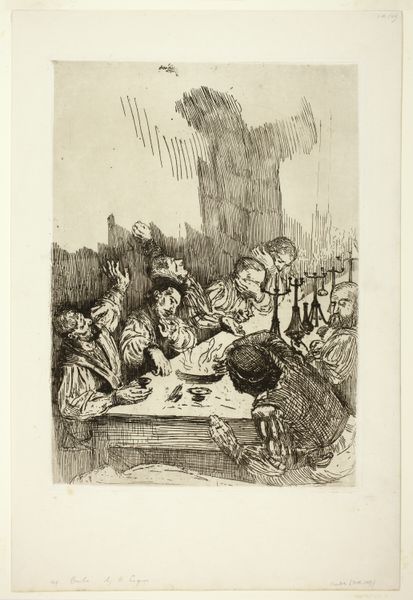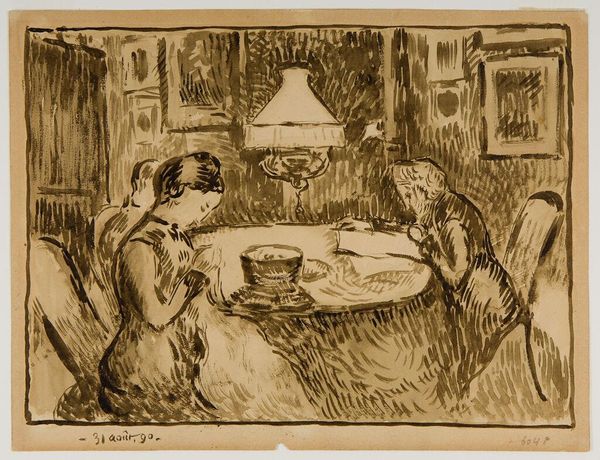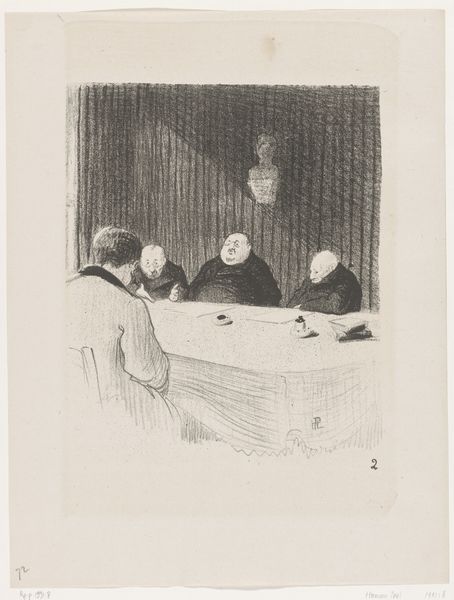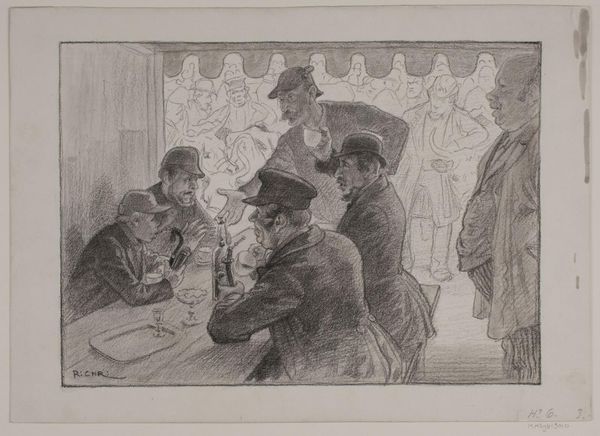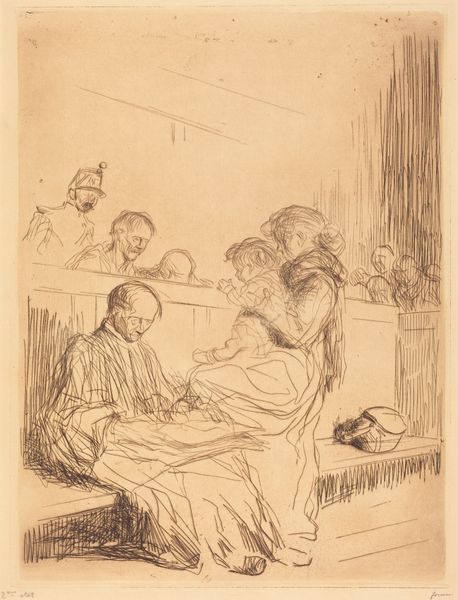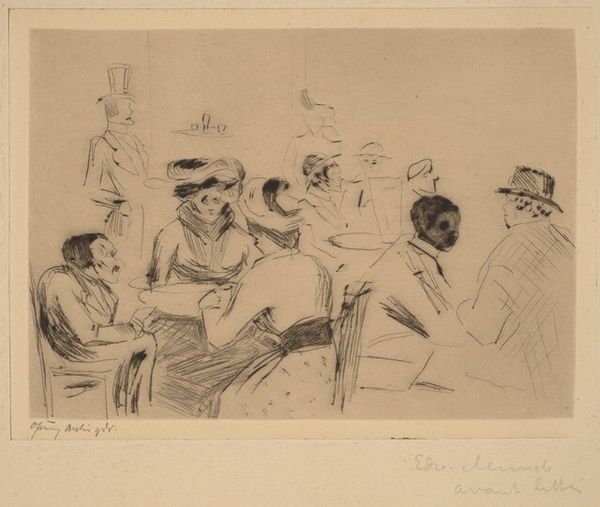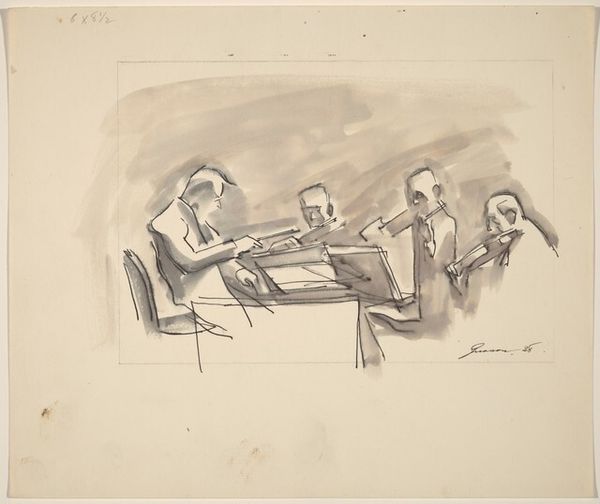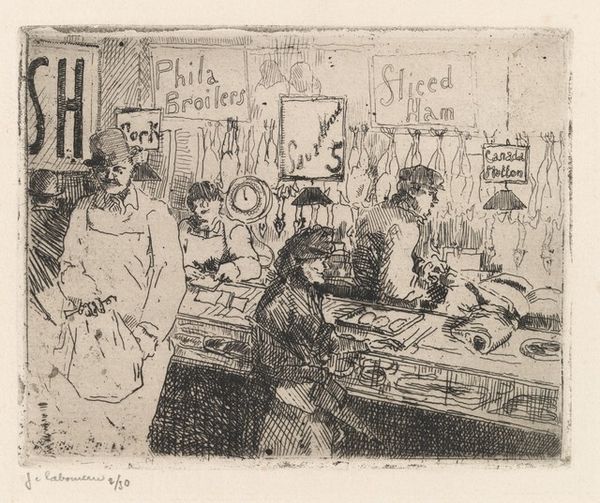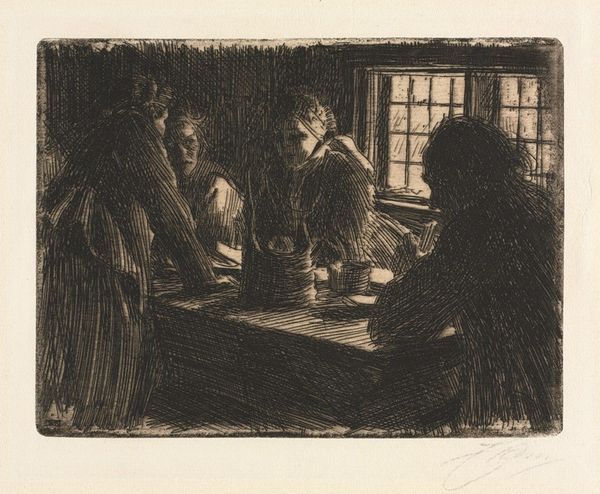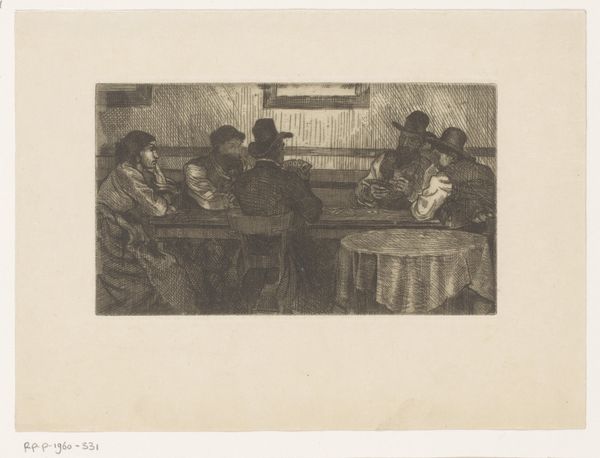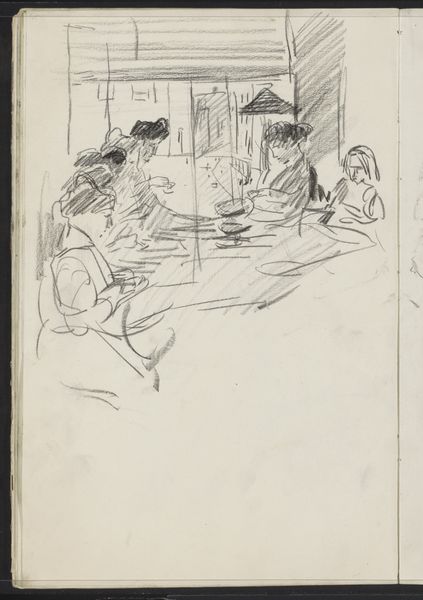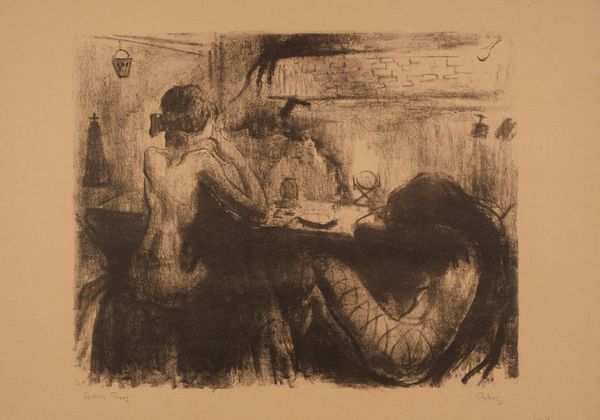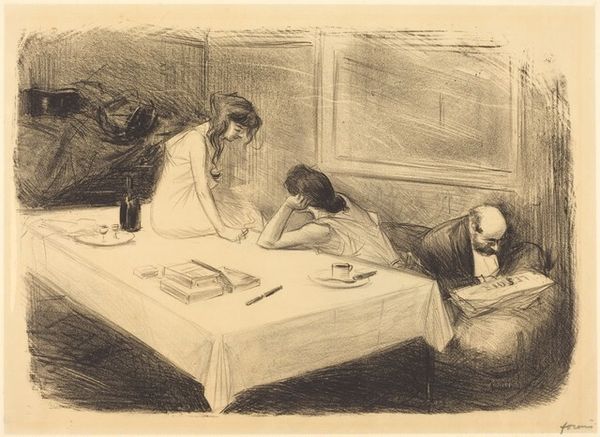
Copyright: Public Domain: Artvee
Curator: Ah, another work that pulls us into the fin-de-siècle underworld. Here we have Edvard Munch's "Hopfenblüte Female Card Player" from 1896. It's an etching, offering a glimpse into the lives of women engaged in a game of cards, likely in a tavern or cafe setting. Editor: It’s stark. The rapid lines create a sense of both intimacy and detachment. You feel like you're intruding on a private moment, yet the scene feels utterly impersonal, doesn’t it? The monochrome palette definitely adds to that somber atmosphere. Curator: It does, and let’s consider Munch's socio-economic status when this was created. He depicts not aristocrats, but people of the working class engaged in leisure that most likely facilitated or exacerbated cycles of debt or dependence. Munch is known for Symbolism, a rebellion against the rising forces of materialism in Europe. Editor: Symbolism aside, there is so much in this piece! The lines carve out volume and suggest light, particularly in the reflection on the glasses and faces. Munch skillfully manipulates depth to create a hierarchy that positions the card players in the foreground against the bustling figures in the background. This pushes us to consider how women like these might have existed simultaneously in plain sight but invisible at the same time. Curator: Invisible yet crucial to the urban landscape and economy. Note the contrast, too, between the careful detail afforded to the women, with their elegant up-dos and fine clothes, and the blurred, indistinct faces of the background figures. This is an etching, a mass-reproducible format. Who do we imagine purchased and traded images of this nature, and why? What purpose would this kind of circulation serve? Editor: Those suggestive lines also imply an underlying anxiety. What seems like just an everyday scene also communicates a world in social unrest and decay. It isn't merely observational; the work communicates so much symbolically through material economy. Curator: Indeed. These works allow a rare peek into a specific kind of cultural performance that would have implications in material exchange. Munch depicts modern alienation within emerging, industrial settings, while giving consideration to his specific economic position to reproduce the works he creates. Editor: Well said! Seeing it that way certainly changes how one might interpret the work, highlighting an underlying layer of socio-economic engagement that pushes the portraiture from surface to substance. Curator: It has been an insightful opportunity to re-examine this scene, and it's context.
Comments
No comments
Be the first to comment and join the conversation on the ultimate creative platform.
